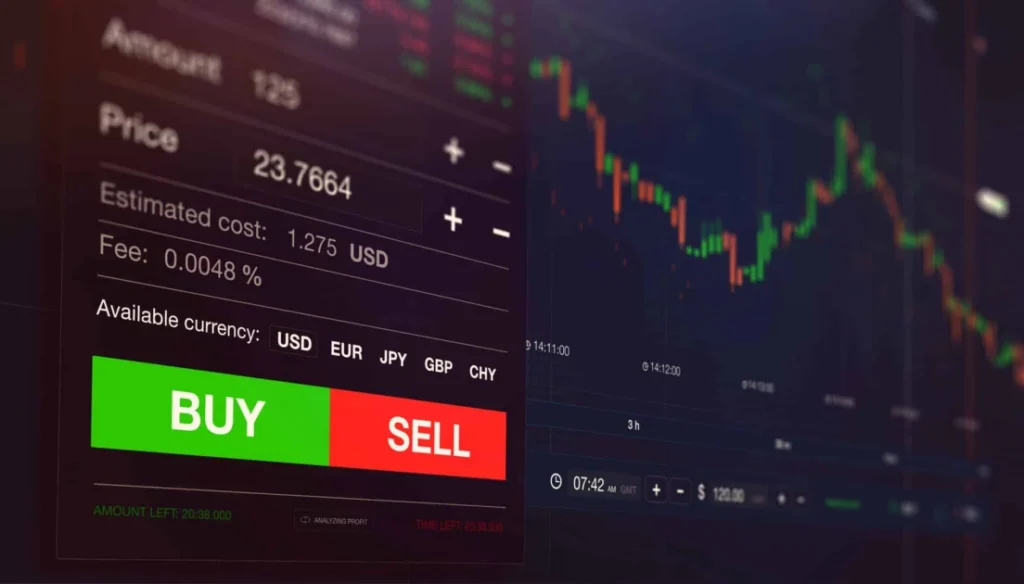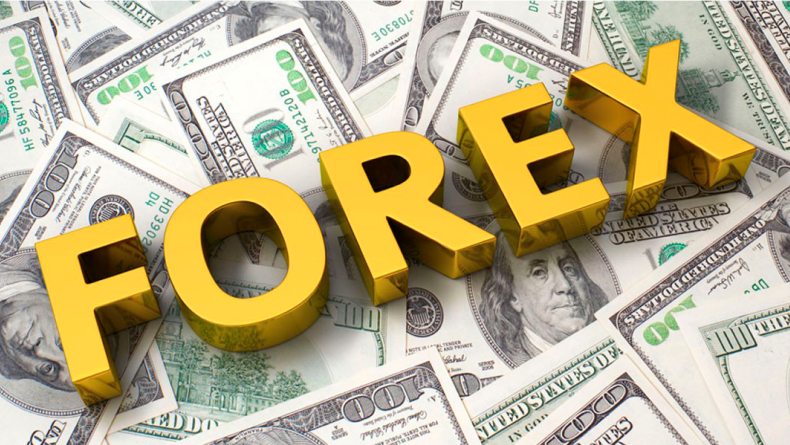Introduction to Forex Trading
What is Forex Trading?
Forex trading, or foreign exchange trading, is the act of buying and selling currencies to make a profit. Every day, trillions of dollars are traded in the forex market, making it the largest financial market in the world. Unlike the stock market, Forex operates 24 hours a day, five days a week, because it’s a global market. People trade forex to take advantage of changing currency values.
For example, if you think the U.S. dollar (USD) will go up in value against the euro (EUR), you would buy USD and sell EUR. If the dollar rises, you make a profit when you sell it back.
How Forex Works
In Forex, currencies are traded in pairs, like EUR/USD, meaning you are buying one currency and selling another at the same time. The first currency in the pair is the base currency, and the second is the quote currency.
- Major Pairs: Include the USD paired with currencies like the euro (EUR), British pound (GBP), or Japanese yen (JPY).
- Minor Pairs: Pairs without the USD.
- Exotic Pairs: A major currency paired with a currency from an emerging economy.
Key Terms in Forex
- Pip: The smallest price change in a currency pair. In most pairs, a pip is 0.0001.
- Lot: A standardized unit of currency trade, usually 100,000 units. But beginners can trade smaller sizes like micro-lots (1,000 units).
- Spread: The difference between the buying (bid) and selling (ask) price.
- Leverage: Allows you to control a large amount of money with a smaller investment. For example, 1:100 leverage lets you control $100,000 with $1,000.
- Margin: The amount of money needed to open a trade using leverage.

Basic Concepts in Forex Trading
Understanding Currency Pairs
In the EUR/USD pair, EUR is the base currency, and USD is the quote currency. If EUR/USD is 1.20, it means 1 euro is worth $1.20. When trading, you are betting on whether the base currency will rise or fall against the quote currency.
What Moves the Forex Market?
Several factors can influence currency prices:
- Economic Factors: Central banks set interest rates, and these rates affect currency prices. Higher interest rates attract foreign investors, which increases demand for that currency.
- Political Events: Elections, government policies, and geopolitical conflicts can create uncertainty and affect currency value.
- Market Sentiment: Traders’ collective opinions and behaviors can push the market up or down.
How to Read Forex Charts
Forex traders use charts to monitor price changes over time. The most popular chart types are:
- Line Charts: Connect closing prices over time.
- Bar Charts: Show the high, low, opening, and closing prices of a currency pair in a given period.
- Candlestick Charts: Provide more detailed price information with color-coded bars showing price direction.
Technical Analysis in Forex
Introduction to Technical Analysis
Technical analysis is the study of price movements using historical data, charts, and indicators to predict future price changes. The idea is that past price behavior can help predict future behavior.
Popular Chart Patterns
- Head and Shoulders: This pattern shows a reversal from an upward trend to a downward trend.
- Double Top/Double Bottom: These patterns signal a change in the current trend.
- Triangles: Triangles show periods of consolidation before a breakout, either upwards or downwards.
Technical Indicators
- Moving Averages: Shows the average price over a specific period. A 50-day moving average, for example, shows the average price over the last 50 days.
- RSI (Relative Strength Index): Measures the speed and change of price movements. RSI values over 70 suggest the market is overbought; under 30 suggests oversold.
- Bollinger Bands: Use a moving average with two bands to show overbought or oversold conditions.
Fundamental Analysis in Forex
Introduction to Fundamental Analysis
Fundamental analysis looks at the overall economic, political, and social environment to predict currency movements. Traders use this method to understand why the market moves in a particular direction.
Key Economic Indicators
- Interest Rates: Central banks control interest rates. When interest rates rise, the currency typically strengthens because higher rates attract foreign capital.
- Inflation: Rising inflation often leads to currency depreciation because it reduces purchasing power.
- Non-Farm Payroll (NFP): The U.S. jobs report released monthly. Strong NFP numbers usually push the USD higher.
Using News in Forex Trading
Economic news releases can cause quick price changes. Traders often place trades right before or after big news events. To do this effectively, they follow an economic calendar, which lists all the major economic announcements.
Risk Management in Forex
Why Risk Management is Crucial
Forex trading is risky. Without proper risk management, it’s easy to lose a lot of money. A key aspect of risk management is determining how much you are willing to lose on a single trade and not risking more than that.
Position Sizing
This refers to how much money you invest in each trade. For example, you should only risk 1-2% of your trading account on any single trade. Use stop-loss orders to limit your potential losses.
Leverage and Margin
Leverage allows you to trade large positions with a smaller amount of money. But using too much leverage can lead to significant losses. For example, with 1:100 leverage, if the market moves against you by 1%, you could lose your entire investment.
Common Trading Mistakes
- Overtrading: Trying to trade too often can lead to poor decision-making.
- Ignoring the Trend: Always trade with the trend, not against it.
- No Stop-Loss: Not using a stop-loss can lead to large, uncontrolled losses.
Forex Trading Strategies
Day Trading Strategies
- Scalping: Focuses on making small profits from very short-term trades. You may hold positions for just seconds or minutes.
- Intraday Trading: Hold trades for several hours but close them by the end of the day. Intraday traders usually use 1-hour or 15-minute charts.
Swing Trading Strategies
Swing trading involves holding trades for a few days to weeks, allowing traders to capture short-term market movements. Swing traders often use both technical and fundamental analysis.
Position Trading Strategies
Position traders hold trades for weeks, months, or even years. This strategy focuses on long-term trends driven by macroeconomic factors like interest rates and GDP growth.
Algorithmic and Automated Trading
Forex robots, or Expert Advisors (EAs), are automated systems that trade for you. While automated trading can be convenient, it’s essential to choose reliable robots and monitor them to avoid unexpected losses.
Trading Psychology
Importance of Psychology in Trading
Emotions can influence your trading decisions. Fear, greed, and impatience can cause traders to make bad trades or abandon their strategies too soon.
Building Discipline
Discipline is key to successful trading. Develop a trading plan that outlines your strategy, risk management rules, and how you will manage trades.
Developing a Winning Mindset
- Stay Calm Under Pressure: Markets can be volatile. Keep your emotions in check and stick to your plan.
- Accepting Losses: Not every trade will be a winner. Learn to accept losses and move on to the next opportunity.
Advanced Forex Topics
Advanced Chart Patterns
- Harmonic Patterns: These are complex patterns based on Fibonacci retracement levels and include the Gartley and Butterfly patterns.
- Elliott Wave Theory: This theory suggests that markets move in predictable cycles, which can be used to anticipate future price movements.
Advanced Technical Indicators
- Ichimoku Cloud: A comprehensive indicator that shows support/resistance levels, trend direction, and momentum.
- MACD (Moving Average Convergence Divergence): Helps traders identify changes in momentum and direction.
- Average True Range (ATR): Measures market volatility.
Setting Up a Forex Trading Account
Choosing a Forex Broker
When choosing a broker, look for one that is regulated by a recognized financial authority, offers low spreads, and provides a good trading platform like MetaTrader 4 or MetaTrader 5.
Types of Forex Accounts
- Demo Account: Allows you to trade with virtual money. Start here to practice.
- Live Account: Trade with real money.
- Micro/Mini Accounts: Good for beginners with small initial investments.
Practice and Demo Trading
Importance of Practicing on a Demo Account
Before risking real money, practice trading in a demo account. It allows you to get used to market movements and test strategies without losing money.
Conclusion
In this course, we’ve covered the basics of Forex trading, risk management, technical and fundamental analysis, and strategies. The key to success in Forex is continuous learning, practicing on a demo account, and maintaining discipline in real trading.


